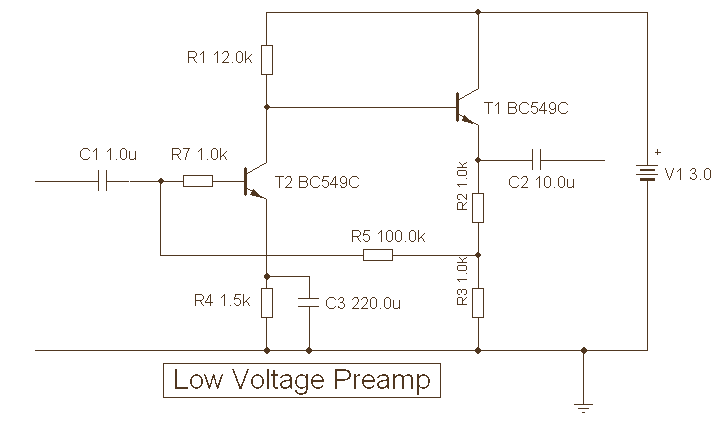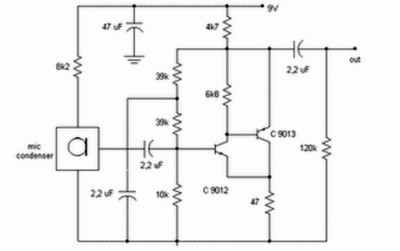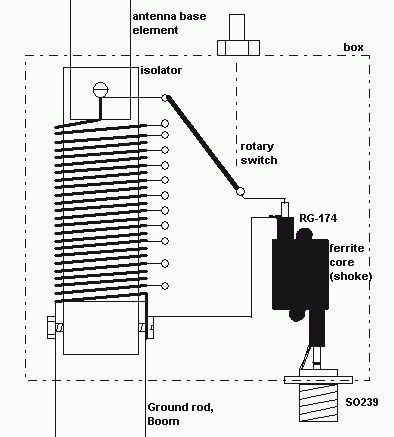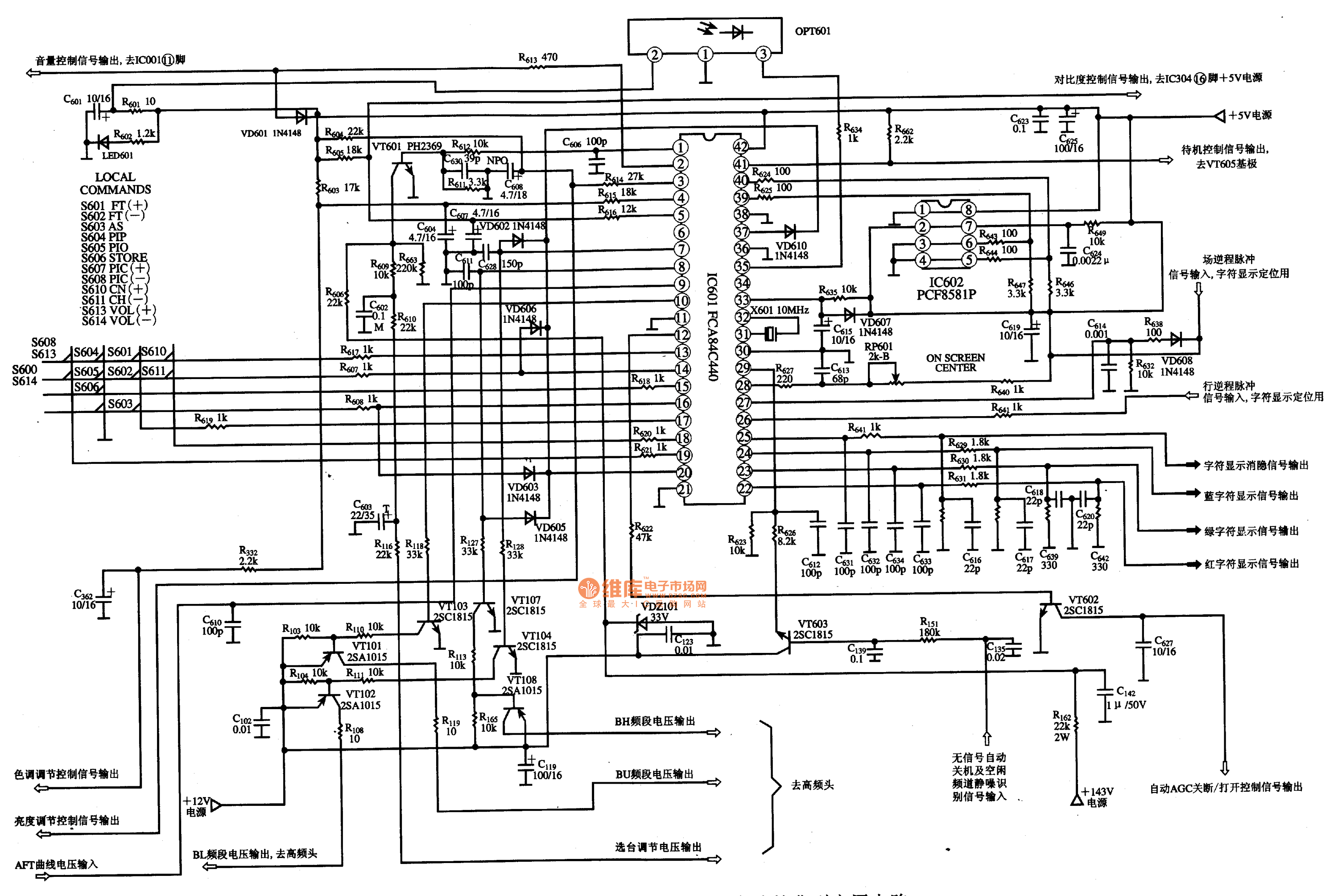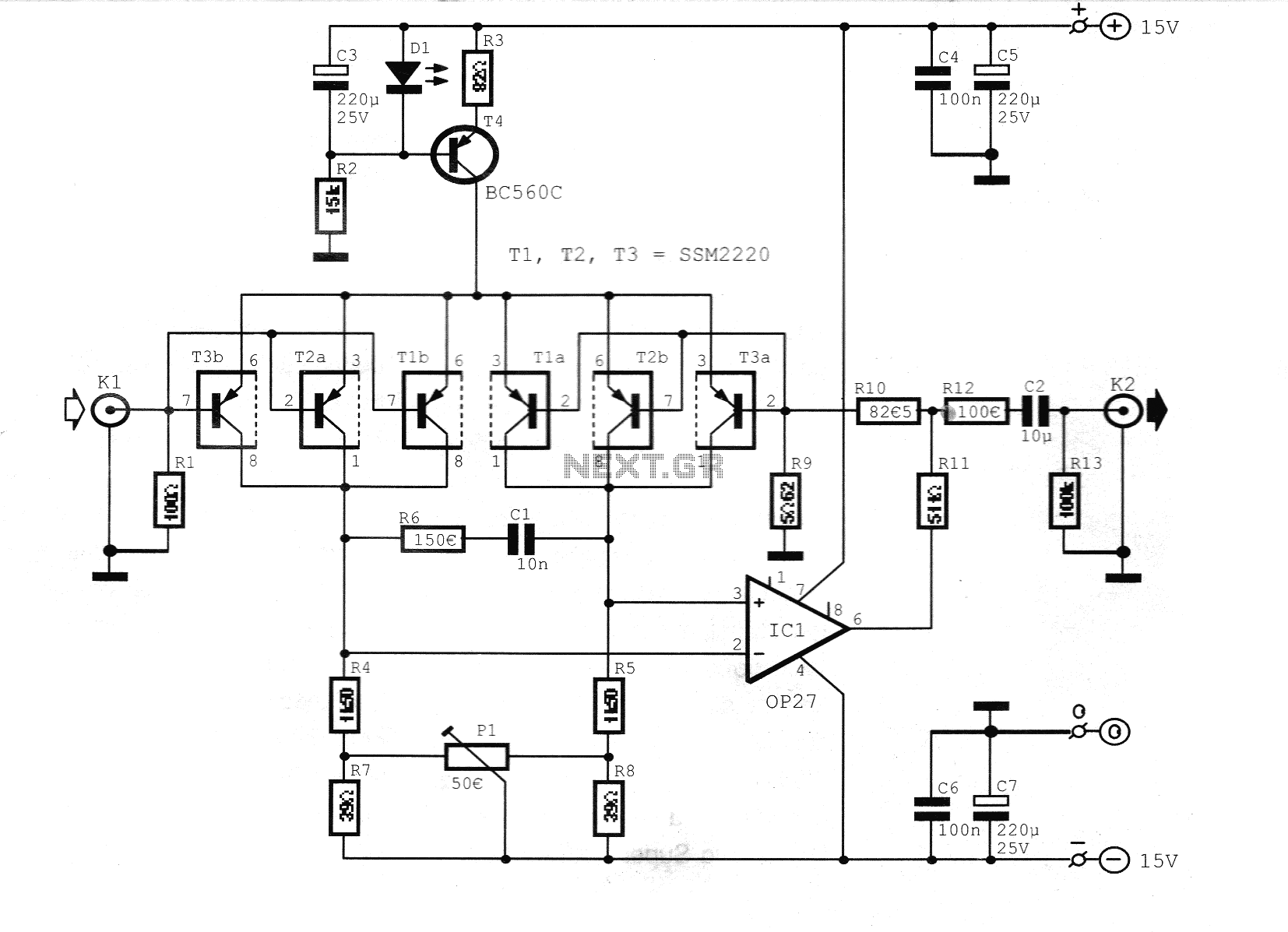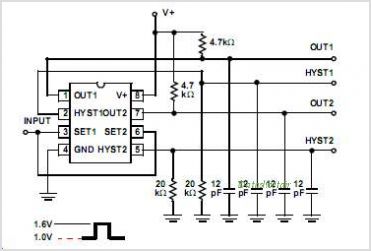
Portable Mic Preamplifier
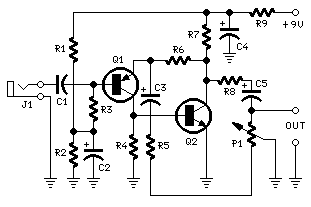
This circuit is mainly intended to provide common home stereo amplifiers with a microphone input. Using a stereo microphone the circuit must be doubled. In this case, two separate level controls are better than a dual-ganged stereo potentiometer. Low current drawing (about 2mA) ensures a long battery life. Harmonic distortion is about 0.1% @ 1V RMS.
This circuit is designed to interface a microphone with home stereo amplifiers, allowing for the amplification of audio signals from a microphone source. It is particularly suitable for stereo microphones, necessitating a dual configuration of the circuit to accommodate both left and right audio channels.
The implementation of two separate level controls is preferred over a dual-ganged potentiometer, as this approach provides more precise control over the audio levels for each channel. This can be particularly beneficial in applications where the audio input levels may vary significantly between the two channels, ensuring optimal sound quality and balance.
The circuit operates with a low current draw of approximately 2mA, making it ideal for battery-powered applications. This low power consumption contributes to an extended battery life, which is a critical consideration in portable audio applications.
In terms of audio quality, the circuit achieves a harmonic distortion level of about 0.1% at 1V RMS, indicating that the circuit maintains a high fidelity audio output with minimal distortion. This performance characteristic is essential for applications requiring clear and accurate sound reproduction, such as public speaking or musical performances.
Overall, the design emphasizes efficiency, user control, and audio clarity, making it a valuable addition to home stereo systems or portable audio equipment.This circuit is mainly intended to provide common home stereo amplifiers with a microphone input. This circuit is mainly intended to provide common home stereo amplifiers with a microphone input. Using a stereo microphone the circuit must be doubled. In this case, two separate level controls are better than a dual-ganged stereo potentiometer. Low current drawing (about 2mA) ensures a long battery life. Using a stereo microphone the circuit must be doubled. In this case, two separate level controls are better than a dual-ganged stereo potentiometer. Low current drawing (about 2mA) ensures a long battery life. Harmonic distortion is about 0.1% @ 1V RMS 🔗 External reference
This circuit is designed to interface a microphone with home stereo amplifiers, allowing for the amplification of audio signals from a microphone source. It is particularly suitable for stereo microphones, necessitating a dual configuration of the circuit to accommodate both left and right audio channels.
The implementation of two separate level controls is preferred over a dual-ganged potentiometer, as this approach provides more precise control over the audio levels for each channel. This can be particularly beneficial in applications where the audio input levels may vary significantly between the two channels, ensuring optimal sound quality and balance.
The circuit operates with a low current draw of approximately 2mA, making it ideal for battery-powered applications. This low power consumption contributes to an extended battery life, which is a critical consideration in portable audio applications.
In terms of audio quality, the circuit achieves a harmonic distortion level of about 0.1% at 1V RMS, indicating that the circuit maintains a high fidelity audio output with minimal distortion. This performance characteristic is essential for applications requiring clear and accurate sound reproduction, such as public speaking or musical performances.
Overall, the design emphasizes efficiency, user control, and audio clarity, making it a valuable addition to home stereo systems or portable audio equipment.This circuit is mainly intended to provide common home stereo amplifiers with a microphone input. This circuit is mainly intended to provide common home stereo amplifiers with a microphone input. Using a stereo microphone the circuit must be doubled. In this case, two separate level controls are better than a dual-ganged stereo potentiometer. Low current drawing (about 2mA) ensures a long battery life. Using a stereo microphone the circuit must be doubled. In this case, two separate level controls are better than a dual-ganged stereo potentiometer. Low current drawing (about 2mA) ensures a long battery life. Harmonic distortion is about 0.1% @ 1V RMS 🔗 External reference
